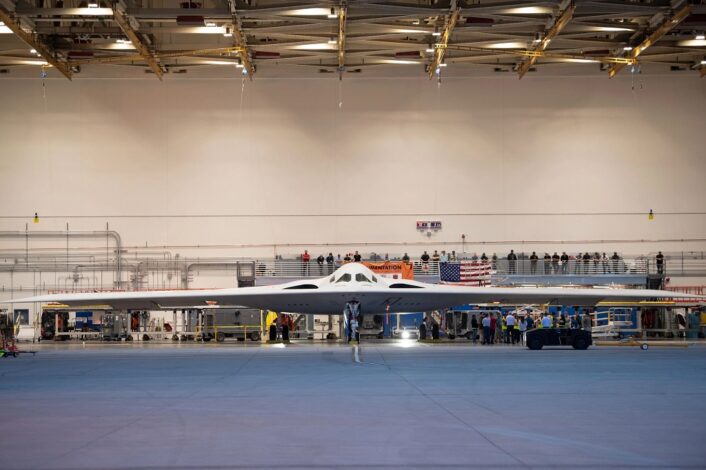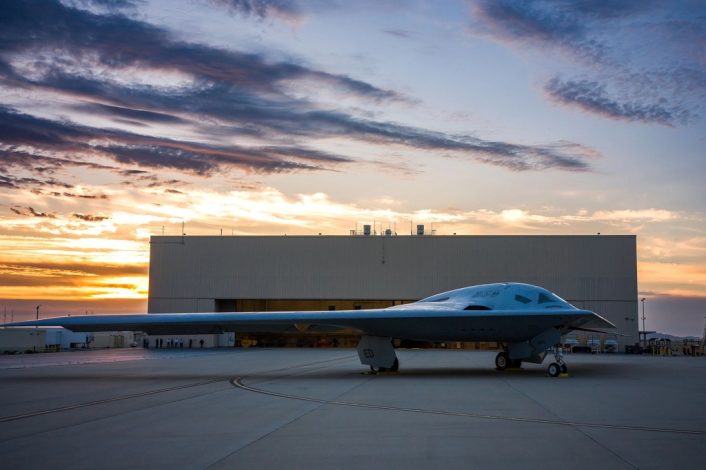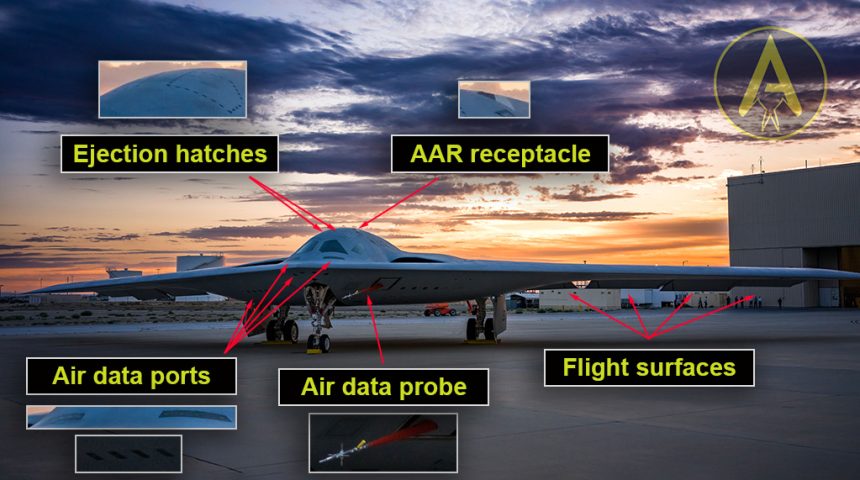With the B-21 Raider in a much more advanced state of completion, here is an analysis of the details exposed by the newest photos of the sixth generation stealth bomber.
On Sept. 12, 2023, three new photos of the B-21 Raider sixth generation stealth bomber were released during the 2023 Air, Space & Cyber Conference. Compared to the most recent photos released in March 2023, the bomber now appears in a much more advanced state of completion as engine runs are already in progress as part of its ground test program at Northrop Grumman’s Palmdale facility.
Following the first two new images released by the U.S. Air Force during the keynote speech delivered by Gen. Charles Q. Brown, Jr., the service’s Chief of Staff, during the conference, another photo was released by Northrop Grumman confirming the info disclosed by Gen. Thomas A. Bussiere, Commander of the Air Force Global Strike Command, about the engine runs.
In the same occasion, Air Force Secretary Frank Kendall shared few new details about the highly classified bomber.
According to Kendall, the Long Range Strike family includes systems to be integrated within the aircraft and others that will accompany it. The Long Range Strike family of systems includes, in addition to the B-21 Raider, Intelligence, Surveillance and Reconnaissance, electronic attack, communication and other capabilities.
“The B-21 family of systems … involves things that could be carried by or possibly accompany the B-21, things that can support it from off-board,” said Kendall. “That includes munitions, it includes other things that could be used for defensive purposes, for example. So, that’s really what that’s all about.”
Among the off-board that we could think of there are unmanned Collaborative Combat Aircraft (CCA). Earlier this year, Kendall said Air Force should procure 200 NGAD fighters along with 1,000 CCA. While the autonomous drones were initially thought to cooperate in the “loyal wingman” role with the sixth-generation combat aircraft within a “system of systems”, Lt. Gen. Slife, Deputy Chief of Staff for Operations, said last week the CCA fleet could also assume other roles, including working in cooperation with the B-21.

Anyway, let’s now discuss the details emerged from the newly released photos, starting from the photo inside the hangar. This new photo allows for a rough estimate of the dimensions of the B-21 by using the personnel under the bomber as reference. Comparing them with the average height of people in the US, the B-21 appears to have a wingspan of about 41.5 m (136 ft) and a height of 6.6 m (20 ft), which means it is narrower (135 ft vs 172 ft) and higher (20 ft vs 17 ft) than the B-2 Spirit.
In all the photos we can see two large trapezoidal arrays on the sides of the nose landing gears which, while they have smaller dimensions, are highly reminiscent of the AN/APQ-181 radar arrays found on the B-2A. The different dimensions are not an issue, as the arrays of the B-2A were designed for a mid-1980s radar technology, while the technology used on the B-21 benefits from the latest miniaturized radar technology.
A dozen of black trapezoidal patches can be seen on the underside of the aircraft, four just below the nose and four on each side aligned with the engine air inlet. While the photos don’t show them clearly, we can assume they could be either air data sensors or fiducial markers for flight testing. Below the cockpit windows we can see two sets of dynamic and static air data ports similar to the ones found on the B-2A.
A large orange air data probe has also been installed on the side of the nose landing gear. We can clearly see that the probe is angled downwards, which led some to suggesting the airplane may fly with a slight pitch-up attitude. This suggestion appears reasonable as the first flight, which will see the Raider moving from Air Force Plant 42 to Edwards Air Force Base, will likely see the aircraft flying in a fixed landing configuration, with flaps and gear down, and thus requiring a lower airspeed and a higher angle of attack.

The new photos show for the first time the control surfaces of the B-21 in a not neutral position. Four sets of surfaces can be seen, three on the outboard side and one on the inboard side of the wing. Judging by the positions and comparing with the B-2A, we can assume that the outermost surfaces are split rudders, while the remaining ones are elevons. On the B-2A, since it has no vertical fin, the split rudders and the elevons are used to control the aircraft rotation along the vertical/yaw axis, whereas pitch and roll are controlled by means of (mid and inboard) elevons.
The side views show even better how the engine section has been blended in the airframe making them as flush as possible with the wing’s surface, compared to the B-2A. As we saw also in the previously released photos, the engine inlets are buried in the airframe to maintain a low Radar Cross Section, as those are usually one of the weakest points for low observability. A black patch can also be seen in the rear of the engine area, which could possibly be an extension of the thermal protection used for the exhaust.
Judging by the markings on top of the aircraft, the air-to-air refueling receptacle has now been added. Other markings that can be seen on top are the serial number in the rear (same position of the B-2A), the insignia of the Air Force Global Strike Command, 412th Test Wing and Air Force Materiel Command, and the markings for the ejection seat warnings and the ejection hatches. The “No Step” and other standard markings have also been applied. The 412th Test Wing insignia on the top of the aircraft is complemented by the “ED” markings on the main landing gear doors.
The newly released photos, according to the info released on DVIDS, were taken on July 31, 2023, few days after Northrop Grumman announced the first “power on” test of the new bomber. As we already mentioned, the new photos are also the first ones taken outside of the hangar, possibly in occasion of the ground tests that could not be performed inside. The first flight of the Raider is expected by the end of calendar year 2023.









